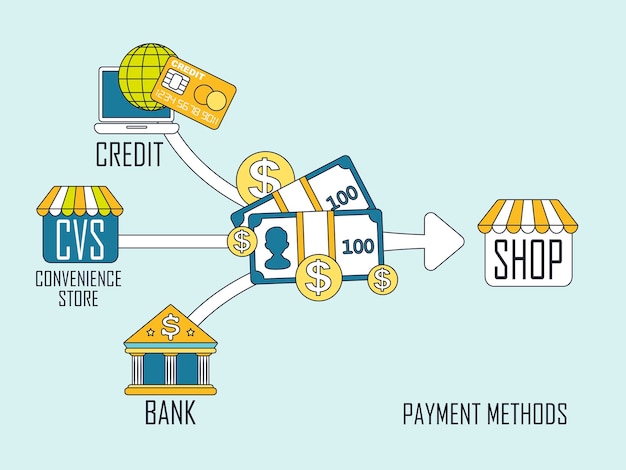ESPPs: Are You Leaving Money on the Table? Maximize Employee Stock Purchase Plans

Employee Stock Purchase Plans (ESPPs) offer employees a chance to buy company stock at a discount, but understanding the details—like eligibility, purchase price, and holding periods—is crucial to maximizing benefits and avoiding potential financial pitfalls, ensuring you’re not leaving money on the table.
Are you taking full advantage of your company’s **Employee Stock Purchase Plans (ESPPs): Are You Leaving Money on the Table?** Understanding the ins and outs can significantly impact your financial well-being.
Understanding Employee Stock Purchase Plans
Employee Stock Purchase Plans (ESPPs) are a fantastic benefit offered by many companies, allowing employees to purchase company stock at a discounted rate. However, many employees don’t fully grasp the potential advantages and disadvantages. Let’s dive into what ESPPs entail and how they work.
What is an ESPP?
An ESPP is a company-sponsored program that allows employees to buy company stock, usually at a discount. The discount can range from 5% to 15% off the market price.
These plans are designed to incentivize employees to become shareholders in the company, aligning their interests with the company’s success. The discount provided makes it an attractive opportunity for employees to build wealth.
How ESPPs Work
Typically, ESPPs operate through payroll deductions. Employees contribute a percentage of their salary over a specified period (the offering period), which can range from a few months to a year or more. At the end of the offering period, the accumulated funds are used to purchase company stock.
- Offering Period: The duration over which you contribute funds.
- Purchase Date: The date when your accumulated funds are used to buy the stock.
- Look-back Provision: Some ESPPs have a “look-back” provision, allowing the purchase price to be based on the lower of the stock price at the beginning or the end of the offering period. This can significantly increase your potential profit.
- Holding Period: The amount of time you must hold the stock after purchasing it to qualify for favorable tax treatment.

Understanding these key components is essential to making informed decisions about participating in an ESPP. The look-back provision, in particular, can be a game-changer, as it ensures you’re buying the stock at the most advantageous price possible within the offering period.
In conclusion, ESPPs provide a valuable opportunity for employees to invest in their company’s future and potentially profit from its growth. Understanding the mechanics of how these plans work is the first step toward making informed decisions.
Assessing Your Eligibility and Financial Situation
Before jumping into an ESPP, it’s important to determine if you’re eligible and to assess whether participating fits within your overall financial situation. Not all employees are automatically eligible, and not every financial situation is conducive to investing in company stock.
Eligibility Requirements for ESPPs
Eligibility requirements vary from company to company. Some common criteria include being a full-time employee, having worked for the company for a certain period (e.g., six months or a year), and not owning a significant amount of company stock already.
Also, it’s important to note that highly compensated employees may face restrictions on the amount of stock they can purchase through the ESPP to comply with IRS regulations.
Evaluating Your Financial Health
Participating in an ESPP involves committing a portion of your income to purchasing company stock. Therefore, it’s crucial to evaluate your financial health before enrolling. Consider the following factors:
- Emergency Fund: Do you have a sufficient emergency fund to cover unexpected expenses?
- Debt: Are you carrying high-interest debt, such as credit card debt?
- Diversification: Is your investment portfolio already heavily weighted towards your company’s stock?
- Cash Flow: Can you comfortably afford the payroll deductions without impacting your ability to cover essential expenses?
If you have high-interest debt or lack an adequate emergency fund, prioritizing these financial goals before participating in an ESPP may be more prudent. Over-investing in your company’s stock can also be risky, as it reduces diversification and exposes you to significant losses if the company performs poorly.

It’s also wise to consult with a financial advisor to assess how an ESPP fits within your broader financial plan. An advisor can help you evaluate the potential risks and rewards, as well as ensure that your investment strategy aligns with your long-term goals.
In conclusion, understanding your eligibility and evaluating your financial health are critical steps before participating in an ESPP. Ensuring that you’re in a stable financial position and that the ESPP aligns with your overall investment strategy will help you maximize the benefits while minimizing potential risks.
Understanding the Tax Implications
The tax implications of ESPPs can be complex, and it’s essential to understand them to avoid any surprises when tax season arrives. How your ESPP is taxed depends on whether the plan qualifies under Section 423 of the Internal Revenue Code.
Qualified vs. Non-Qualified ESPPs
Most ESPPs are qualified, meaning they meet the requirements of Section 423. These plans offer more favorable tax treatment compared to non-qualified plans.
To qualify, the ESPP must be offered to all eligible employees, and the discount cannot exceed 15% of the stock’s fair market value at the time of grant or purchase.
Tax Treatment of Qualified ESPPs
With a qualified ESPP, you don’t pay ordinary income tax on the discount when you purchase the stock. Instead, the discount is taxed as ordinary income when you sell the stock, assuming you meet certain holding period requirements.
To qualify for this treatment, you must hold the stock for at least two years from the grant date (the beginning of the offering period) and at least one year from the purchase date. If you meet these holding period requirements, the difference between the market price when you sell the stock and your purchase price is taxed as a capital gain (either short-term or long-term, depending on how long you held the stock).
Disqualifying Dispositions
If you sell the stock before meeting the holding period requirements, it’s considered a disqualifying disposition. In this case, you’ll pay ordinary income tax on the difference between the market price on the purchase date and your purchase price. Any additional profit would be taxed as a capital gain.
- Ordinary Income: Taxed at your regular income tax rate.
- Capital Gain: Taxed at a lower rate if held for more than one year (long-term capital gain).
- Disqualifying Disposition: Selling the stock before meeting holding period requirements.
Understanding these distinctions is crucial for tax planning. Keeping accurate records of your ESPP transactions, including purchase dates, grant dates, and sale dates, will help you calculate your tax liability accurately. Consult with a tax advisor to ensure you’re taking advantage of all available tax benefits and avoiding any costly mistakes.
In summary, the tax implications of ESPPs can be intricate, but understanding the difference between qualified and non-qualified plans, as well as the holding period requirements, will help you navigate the tax landscape effectively. Careful planning and accurate record-keeping are key to optimizing your tax outcome.
Weighing the Risks and Rewards
Participating in an ESPP involves both risks and rewards. While the opportunity to purchase company stock at a discount is enticing, it’s crucial to weigh these factors carefully to make an informed decision.
Potential Rewards of ESPPs
The primary reward of an ESPP is the potential for financial gain. The discount offered on the stock purchase can provide an immediate return on investment. If the company’s stock price increases, you can sell the stock for a profit.
Furthermore, some ESPPs offer a “look-back” provision, allowing you to purchase the stock at the lower of the price at the beginning or end of the offering period. This can significantly enhance your potential returns.
Potential Risks of ESPPs
The main risk of participating in an ESPP is the potential for loss. If the company’s stock price declines after you purchase the stock, you could lose money. This risk is amplified if you’re heavily invested in your company’s stock, as your financial well-being becomes closely tied to the company’s performance.
Another risk is the lack of diversification. If a significant portion of your investment portfolio is concentrated in your company’s stock, you’re exposed to greater risk compared to having a diversified portfolio.
It’s also important to consider the holding period requirements. If you need access to the funds before meeting the holding period requirements, you may be forced to sell the stock at a loss or incur unfavorable tax consequences.
- Concentration Risk: Over-investing in your company’s stock.
- Market Volatility: Stock prices can fluctuate, leading to potential losses.
- Holding Period: Restrictions on selling the stock before meeting certain requirements.
Diversification is a key strategy for managing risk. Consider selling the stock acquired through the ESPP and reinvesting the proceeds in a diversified portfolio of stocks, bonds, and other assets. This can help reduce your exposure to any single company’s performance.
In conclusion, balancing the potential rewards with the inherent risks is essential when participating in an ESPP. Understanding the factors that can impact your investment and implementing risk management strategies, such as diversification, will help you make informed decisions and protect your financial well-being.
Strategies for Maximizing Your ESPP Benefits
To make the most of your ESPP, consider employing strategies that can help maximize your benefits and minimize your risks.
Enroll for the Maximum Allowable Contribution
If your financial situation allows, consider contributing the maximum amount permitted by the ESPP. This will allow you to purchase the most shares possible at the discounted price.
However, be sure that you’re doing this within the constraints of your overall financial plan. Don’t overextend yourself to the point where you’re sacrificing other important financial goals, such as saving for retirement or paying down high-interest debt.
Utilize the Look-Back Provision
If your ESPP has a look-back provision, take full advantage of it. This provision allows you to purchase the stock at the lower of the price at the beginning or end of the offering period.
This can significantly increase your potential profit, especially if the stock price has risen during the offering period. It essentially gives you a second chance to buy the stock at the lowest possible price.
Consider Selling and Diversifying
Once you’ve met the holding period requirements, consider selling the stock and diversifying your investment portfolio. This can help reduce your exposure to concentration risk. Reinvest the proceeds in a mix of stocks, bonds, and other assets that align with your risk tolerance and long-term goals.
- Maximize Contribution: Invest up to the allowable limit.
- Leverage Look-Back: Take advantage of lower purchase prices.
- Diversify: Reinvest proceeds to reduce risk.
It’s also worth considering tax-loss harvesting. If you have capital losses in other investments, you can use those losses to offset the capital gains from selling your ESPP stock. This can help reduce your overall tax liability.
In conclusion, maximizing your ESPP benefits involves a combination of strategic enrollment, leveraging plan features, and proactive risk management. By contributing the maximum amount, utilizing look-back provisions, and diversifying your portfolio, you can potentially increase your returns and protect your financial well-being.
Alternative Investment Options
While ESPPs can be a valuable tool, it’s important to consider them in the context of other investment options. Diversifying your investments can help reduce risk and potentially enhance your long-term returns.
Retirement Accounts
One of the first places to consider investing is in retirement accounts, such as 401(k)s and IRAs. These accounts offer tax advantages that can help you grow your wealth over time.
If your company offers a 401(k) match, be sure to contribute enough to receive the full match. This is essentially free money and can significantly boost your retirement savings.
Diversified Investment Portfolio
Consider investing in a diversified portfolio of stocks, bonds, and other assets. This can help reduce your exposure to any single investment and potentially enhance your long-term returns.
You can build a diversified portfolio using mutual funds, exchange-traded funds (ETFs), or individual stocks and bonds. Choose investments that align with your risk tolerance and long-term goals.
Other Investment Opportunities
Explore other investment opportunities, such as real estate, commodities, and alternative investments. These can provide diversification benefits and potentially enhance your returns.
- 401(k) and IRAs: Tax-advantaged retirement savings.
- Diversified Portfolio: Stocks, bonds, and other assets.
- Alternative Investments: Real estate, commodities, and more.
It’s important to consult with a financial advisor to determine the best investment strategy for your individual circumstances. An advisor can help you assess your risk tolerance, set realistic goals, and develop a plan to achieve your financial objectives.
In summary, while ESPPs can be a valuable tool, it’s important to consider them in the context of other investment options. Diversifying your investments and taking advantage of tax-advantaged retirement accounts can help you build wealth and protect your financial well-being.
| Key Point | Brief Description |
|---|---|
| 💰 Discounted Stock | ESPPs offer company stock at a reduced price. |
| 📅 Holding Period | Must hold stock for a certain period for favorable taxes. |
| ⚖️ Risk vs. Reward | Weigh the potential gains against market risks. |
| Diversification | Avoid over-investing; diversify your portfolio. |
Frequently Asked Questions (FAQs)
▼
A look-back provision allows the purchase price to be based on the lower of the stock price at the beginning or end of the offering period, maximizing potential profit.
▼
With a qualified ESPP, the discount is taxed as ordinary income when you sell the stock, assuming you meet certain holding period requirements.
▼
Concentration risk refers to over-investing in your company’s stock, which can lead to significant losses if the company performs poorly.
▼
You must hold the stock for at least two years from the grant date and at least one year from the purchase date to qualify for favorable tax treatment.
▼
Enrolling depends on your financial situation, risk tolerance, and whether the ESPP aligns with your overall investment strategy. Consult a financial advisor if needed.
Conclusion
Employee Stock Purchase Plans (ESPPs) can be a valuable benefit, but understanding the details and aligning them with your financial goals is crucial. By carefully assessing eligibility, weighing risks and rewards, and considering tax implications, you can make informed decisions about participating in an ESPP and avoid potentially leaving money on the table.





